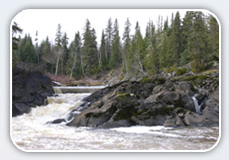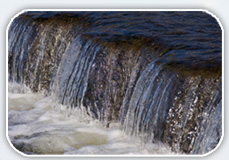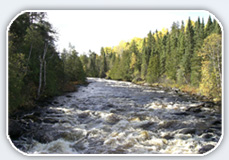Waterpower Basics
Waterpower has been a part of Ontario's energy legacy since the 1800s, with early generating stations such as Decew Gristmill established in 1872, but small hydro really came back with the Green Energy Act in 2009.
Why Hydro?
- Coal fired generation is mandated to be shut down in Ontario by 2014
- Portion of replacement generation to come from renewables i.e. wind, solar, biomass & small hydro
- Each fuel
source has a role to play in diversification of the supply mix:
– Increased system reliability on local level
– Decreased need for new transmission lines
– Part of global trend to go green
– Make communities part of the solution - Wind and solar are clean but are intermittent sources - i.e. they run when the wind blows or when the sun shines - and not necessarily when power is required
- Water is predictable and provides a stabilizing effect that helps balance power production with consumption
- Waterpower is long lived. Many facilities have been in operation 80+ years
- Solar and wind have a lifespan of about 20 years and nuclear 40 years
- Waterpower is the least expensive alternative. In the long run it will help moderate electricity rate increases
What makes small waterpower green?
- To be green, small waterpower has to meet multiple criteria:
– Under 10 MW
– Minimal or no storage (less than 48 hrs)
– Minimal environmental impact (e.g. fish)
– Small physical and ecological footprint - Facilities that meet green criteria are eligible for “EcoLogo Certification” from Government of Canada
- Xeneca strives to obtain EcoLogo Certification for each project as a reflection of our efforts to be green
- Being green means making extra effort in the engineering process to address stakeholder questions and concerns and, where possible, derive benefits











